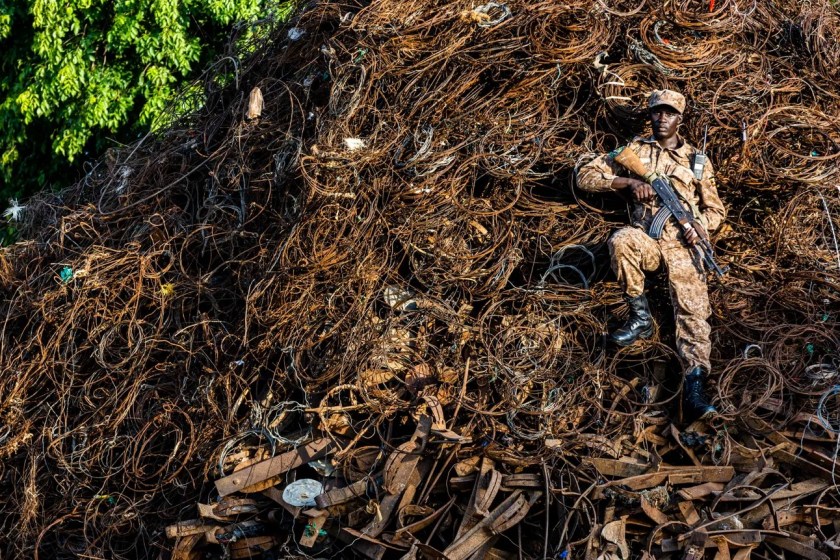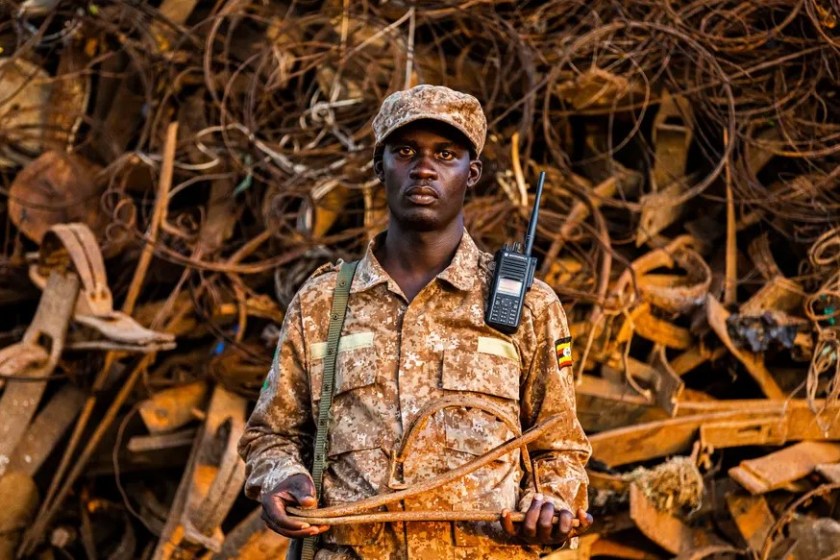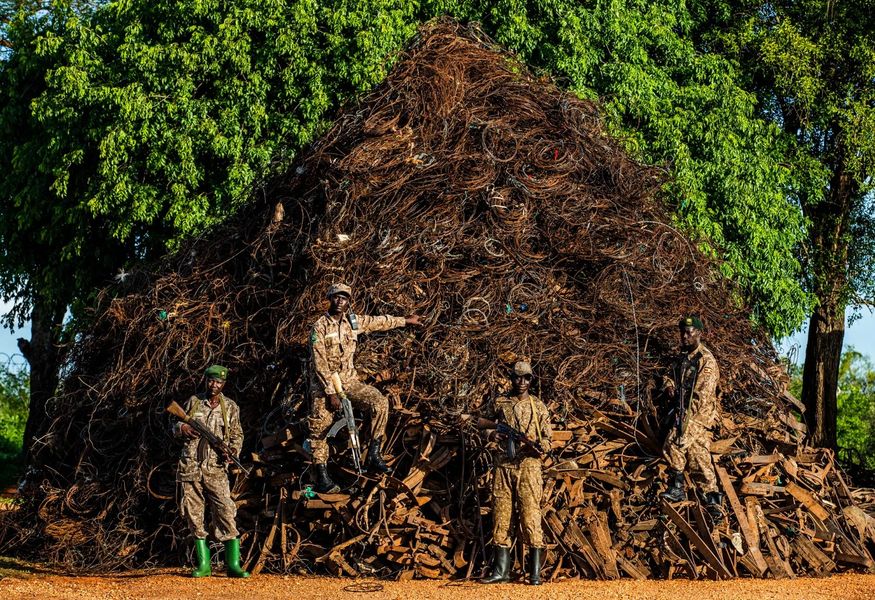On a sunny day in Africa, an endangered elephant is being slaughtered by poachers so that a single body part can be sold for huge sums of money. And it's not just elephants: Poachers are targeting rhinos, zebras, lions, and many more creatures to fuel a shady underground market in which rich people pay huge amounts for illegally harvested animal products. The money gained from these transactions sometimes funds even greater evil, such as terrorism organizations, as reported by The Guardian.
Poaching, among other criminal activities, has increased in the last few years as tourist income in Africa has been rocked, due both to the COVID-19 pandemic and residual damage from floods. Michael Keigwin, who established the Uganda Conservation Foundation, said this has created a perfect storm for a poaching crisis over the past 18 months.
New photos released by the UGC show a glimpse of the magnitude of the poaching problem: The Uganda Conservation Foundation, working with Ugandan government rangers, has recovered 13 tons of snares and traps in the last year alone (a whopping 51 tons over the last 10 years). The UCG released photos of their rangers posing with the pile to convey the reality of just how many snares and traps have been collected over the last year alone
"Economically, things are bad here for people," he said. "COVID was very bad for the tourist industry, and flooding from the Nile, which was well above record levels, has destroyed crops and harmed people and wildlife."

Photo courtesy of Uganda Conservation Foundation
The pile of poaching traps, dubbed "snare mountain" by locals, was collected as part of ongoing conservation efforts at Uganda's Murchison Falls National Park.
The heavier traps at the bottom of the pile are referred to as bear traps; but in Africa, they are used by poachers to capture elephants, hippos, and lions. The wire snares, piled on top of the heap, are used to entangle smaller animals—although they pose a danger to anything that gets caught in them, even conservation rangers.
This pile of traps is destined for a dirt nap. It will be buried in the foundations of the park's new buildings, which will include ranger accommodations, an armory, a veterinary lab, and a police station, The Guardian reports.
In a small amount of good news, some wild populations in Africa have recovered over the past decade as collective efforts to protect the park's wildlife have seen success. Rothschild giraffe numbers are up from 400 to more than 2,000, and the Uganda kob (a type of antelope) has quadrupled from 40,000 to about 160,000, said Keigwin.
Rhino poaching numbers have declined slightly this year, with an 11 percent drop in the number of rhinos killed this year compared with the same time last year.

Photo courtesy of Uganda Conservation Foundation
Poaching problems in Africa are not new. In the 1800s, some of the European big game hunters who came to Africa to hunt were actually tried and found guilty by the African kings on whose land they had hunted without permission.
In 1900, the new European colonial states enacted game preservation laws, essentially forbidding most Africans from hunting. This turned most forms of African hunting, including hunting for sustenance, into illegal poaching. The threat of commercial poaching at that time was a rising issue, but nowhere near to the point it would become later on.
In the 1950s and '60s, as African countries gained independence, many of them retained the game laws that had previously been enacted; but poaching, in a large sense, continued. Some people harvested "bush meat"—or illegally gained meat—for food, but the bigger problem was the large prevalence of commercial poaching.
Elephant and rhinoceros populations in Africa faced potential extinction as the poaching market soared in the 1970s. In 1973, the Convention on International Trade in Endangered Species of Wild Fauna and Flora (commonly known as CITES) was formed to govern the trade of endangered plants and animals.
Poaching has continued despite efforts to curb it. A concerning trend has been discovered under a CITES program that monitors the illegal killing of elephants. In 2006, the level of illegally killed elephants was at 0.5, meaning that about half the elephant carcasses encountered at survey sites were reported as illegally killed. By 2011, however, those levels had risen to a startling 0.9, with hot spots in areas of Central and Eastern Africa.
READ MORE: Will We Ever Be Able to Stop Poaching, or Do We Need to Handle It Differently?




